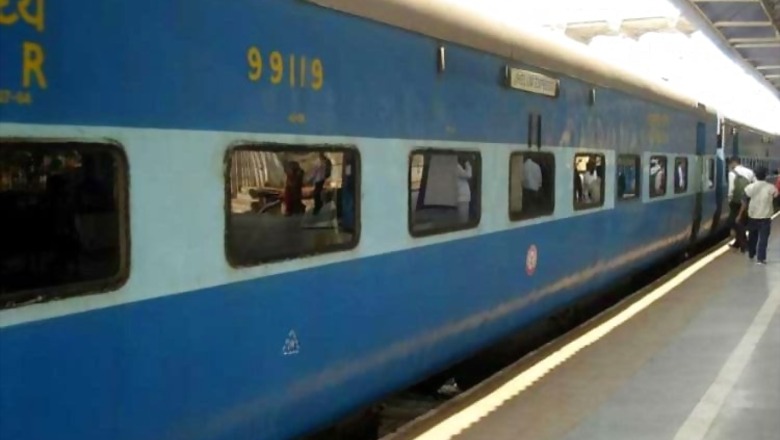
views
New Delhi: Indian Railways will have to depend on more government support and borrowing to fix their finances in its budget on Thursday, with New Delhi reluctant to unveil steep fare hikes ahead of key state elections, officials said.
India's railways, the world's fourth largest, is a lifeline for 23 million people, but years of underinvestment have strained the system to the limit, reducing average speeds to 50 km per hour and forcing companies to ship freight on clogged roads.
Prime Minister Narendra Modi's government unveiled a $137 billion, 5-year modernisation plan in 2015 to overhaul the largely colonial-era network and boost growth in Asia's third-largest economy, but a slump in passenger and freight revenues in 2016 is straining its finances.
Total revenue is up 5.8% in the first 10 months of this financial year, below the double-digit pace in the past.
A proposed 24% hike in the salaries of 2.6 million employees and pensioners, meanwhile, will land the railways with a wage bill of about $4.7 billion.
Two senior government officials said raising freight tariffs significantly was not on the cards, and that a steep rise in passenger fares in Thursday's railway budget also was unlikely as fewer-than-expected travellers catch the train and an industrial slowdown crimps the growth of freight.
Modi's government is also expected to focus on more populist spending in Monday's Union Budget to shore up support among poorer Indians ahead of four state elections in 2016, making big fare hikes tough to justify.
"The railways are not doing well and there is this revenue shortfall but it will be very difficult to raise fares," said Shri Prakash, a former member of the Railway Board.
He said stiff competition from airlines for wealthier travellers, whose higher fares are a major source of revenue, had hurt the railways' earnings along with a fall in demand for major goods like coal and cement.
Railway minister Suresh Prabhu has made progress in adding capacity to crunch points, but analysts say the railways are yet to turn into the economic driving force Modi was hoping for when the government announced last year's modernisation plan.
India's railways, once bigger than China's, have been outstripped by its neighbour after successive governments used them to nurse their political constituencies rather than to generate money for modernisation and expansion.
Axis Capital estimates the railways would have earned 1.3 trillion rupees ($19 billion) each year if they had raised fares 5 to 6 percent annually over the past decade, against today's 220 billion rupee loss from passenger services.
Finance Minister Arun Jaitley cut the Rs 400 billion of cash promised to railways in his last budget by a fifth after they failed to spend money in time.
The railways, however, are still expecting about 500 billion rupees in support for projects in 2016/17, the two government officials said, and the network will need to depend on market borrowing and more government support to fund capital expenditure next fiscal year.
"There is little room for increasing freight tariffs," one of the officials said, speaking on the condition he was not identified.
The railways are unlikely to increase the annual outlay substantially for the second straight year after raising it by 52% in 2015/16 to $14.6 billion, the second government official said.
The money spent on the railways is a little over 2% of overall public expenditure, but its symbolic importance and political resistance to change have discouraged governments from doing away with the tradition of a separate budget.


















Comments
0 comment